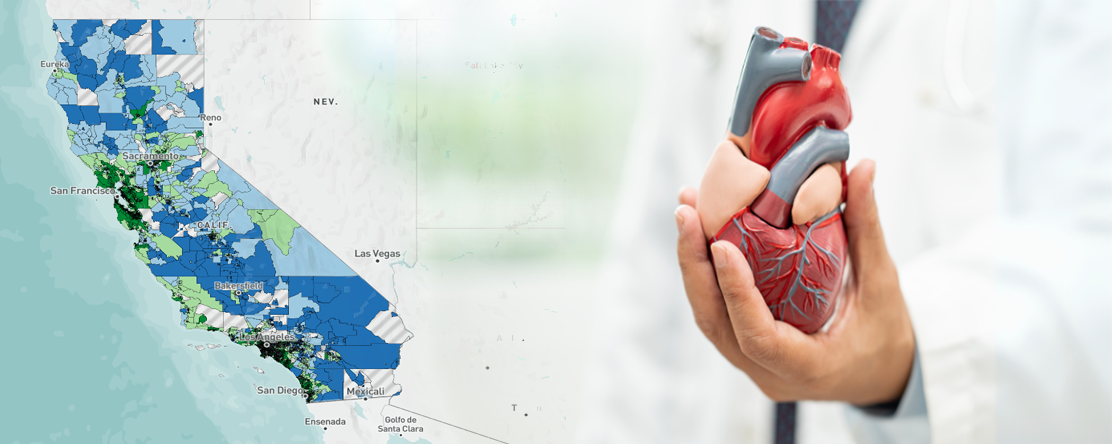
Race and Neighborhood Social Determinants of Cardiovascular Disease Mortality in California Adults, Before and During the COVID-19 Pandemic
- Tracy Delaney, PhD, BS
- Neil Maizlish PhD, MPH
Adrienne Damicis MS
Helen Dowling MPH
-
Focus Areas
Data, Technology & Innovation, Health Care & Population Health, Healthy Communities -
Issues
Population Health -
Expertise
Research – Quantitative -
Programs
Public Health Alliance of Southern California

The COVID-19 pandemic amplified the pre-existing racial and socio-economic health disparities that contributed to COVID-19 mortality, and reversed several decades of declining cardiovascular disease mortality. This study from PHI’s Public Health Alliance of Southern California, published in the American Journal of Preventive Medicine, investigated the social determinants of cardiovascular disease mortality (CVD) and effect modification by race/ethnicity, age, and sex, before and during the COVID-19 pandemic, in Californians aged ≥18 years.
See the full studyMethods
The Healthy Places Index (HPI) is a composite of 23 indicators of neighborhood economic conditions, education, transportation, housing, social capital, environmental pollution, built-environment, and access to health care. In this cross-sectional study, 615,295 CVD deaths were aggregated to 2010 census tracts from death certificates and populations from U.S. census, 2015-2021. Death rates were age-adjusted and stratified by HPI deciles, sex, and race/ethnicity, and segmental regression was used to describe HPI-CVD dose-response.
Results
CVD mortality rates in 2015 to 2019 were inversely associated with HPI and declined 5.4% per HPI decile. The rate ratio between the 1st and 10th decile (reference) was 1.77 (CI95%: 1.71–1.83) for all CVD, 2.24 (CI95%: 2.12–2.36) for ischemic heart disease, 2.01 (CI95%: 1.84–2.2) for hypertensive heart disease, and 1.41 (CI95%: 1.30–1.52) for stroke. The pre-pandemic HPI-CVD mortality gradient was unaltered in the pandemic period (2020-2021). Differences in mortality rates between the highest and lowest HPI decile within race/ethnicity groups were larger than differences between race/ethnicity groups. The HPI-attributable fraction of CVD mortality was 0.28.
Discussion
Preceding and during the COVID-19 pandemic in California, cardiovascular disease mortality rates were inversely associated with Healthy Places Index. The pandemic halted pre-pandemic annual improvement in ischemic heart disease mortality and amplified pre-pandemic trends of increasing mortality from hypertensive heart disease and stroke. However, the pandemic did not fundamentally alter the pre-existing social gradient. Prior to the pandemic, the annual number of HPI-attributable CVD deaths.
Conclusions
The pandemic did not change pre-existing disparities in CVD mortality associated with social determinants of health. There are untapped opportunities to integrate area-based socioeconomic measures in public health surveillance and population health monitoring in healthcare, and to reinforce policies and programs that reduce CVD health inequities.
Originally published by American Journal of Preventive Medicine
Work With Us
You change the world. We do the rest. Explore fiscal sponsorship at PHI.
Support Us
Together, we can accelerate our response to public health’s most critical issues.
Find Employment
Begin your career at the Public Health Institute.


